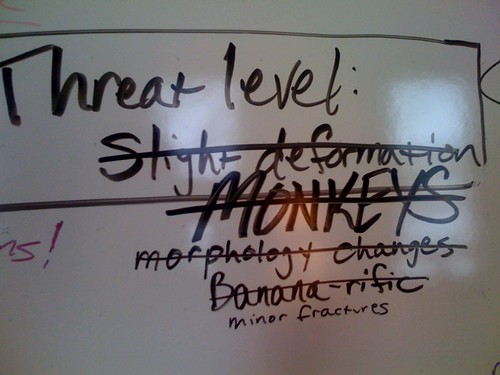Delicious is dead.
Er, sorry. Delicious is in the sunset column.
I don’t know if I could write a better eulogy to Delicious than Marshall has at ReadWriteWeb. He hit on so many points and ways in which the service was so valuable to so many people. Me included.
I started experimenting with Delicious in 2005 after hearing a hallway conversation between Scott Leslie and another of my BCcampus coworkers at the time. They were talking about these things called folksonomy and tagging. I was intrigued.
Delicious was the place where so much of the Web 2.0 world first made sense to me. With Delicious, I got it. I got the power of networks. I got social learning. I got tagging. I got the cloud. I got transparency. I got open. I got web as tool. I got what a “social” network was, even though I was still years away from joining Facebook or Twitter. Delicious armed me with enough conceptual knowledge of what a social network was that I was able to scaffold that knowledge and easily “get” the value of Facebook and Twitter when they arrived a few years later.
Today I kinda feel like when AOL announced they were killing Netscape; a kind of melancholy sadness at the passing of something that was once so great.
But what makes this different from Netscape is that Delicious is still great and remains one of the most valuable tools in my network. It did what it did extremely well. Sure there was the convenience of storing your bookmarks on the web and having them accessible from anywhere, but that wasn’t the real value of Delicious for me. The real value is its transparency in that I am able to see what my network is bookmarking. Delicious gives me a glimpse into what they found important on the web. What they bookmarked helped me focus my attention on what was important. It helped me learn. Delicious was a small piece of social learning in action. I was observing skilled practitioners in my field through their bookmarks, and was able to follow their links and find out why they felt this article or this link was important to them.
Oh sure, there is that Twitter thing where links are shared all the time. But Delicious is different. Beyond the realtime stream of what my network is bookmarking at the moment, I also had access to everything they had ever bookmarked in the past. Through the Delicious search engine, I was able to search through hundreds of thousands of links curated by the members of my network. The people who I connect with in Delicious are dealing with the same problems, questions and challenges that I do. When I needed to recommend a new tool for a job, I would go to my Delicious network first and search what my network had squirreled away there. Being able to have access to this collected archive of links vetted by people I trusted? Invaluable.
Rarely did a conversation happen “on Delicious”. It wasn’t that kind of social network. It was a lurkers paradise. Not that I didn’t contribute. I bookmarked and annotated, passively adding to the collective knowledge (so I hoped) of my network.
Yeah, I know Diigo is there. That is probably where I will end up. But I always found Diigo too heavy, too feature rich. In Delicious, there was simplicity. It was the journeyman of Web 2.0 tools. Dependable, gets the job done, no nonesense. But yet flexible enough that you could mash it and collaborate in numerous ways.
In some respects, Delicious is just a tool. I mean, I still have those connections, and I can and will recreate them in other venues and services. My network will survive. I’ll find ways to continue doing what I do. That’s what distributed networks do. Survive thermonuclear bombs to rebuild and thrive again. But it was this tool (and, more specifically, the architects of this tool) who taught me so much about how the web works that calling it “just a tool” seems cheap and demeaning. It deserves more respect from me than that. A shovel is a tool. Delicious was disruptive and changed my view of how things worked.
Sometimes it IS about the technology. And I can’t give it much higher praise than that.





